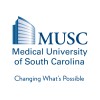
Stroke Volume Variation and Plethysmography Variability Index as Goal Directed Fluid Therapy in...
Goal Directed Fluid TherapyPatients were allotted to two Groups , SVV Guided Fluid Therapy Group received intraoperative fluids to maintain SVV <11 , and PVI Guided Group received intraoperative Fluids to maintain PVI<11

Michigan Stroke Transitions Trial
Acute StrokeThe Michigan Stroke Transitions Trial (MISTT) is a patient-centered randomized control trial that aims to improve the experience of stroke patients after they return home. The MISTT study will test the effect of two complementary interventions against usual care. The two interventions include: a) Stroke Case Managers (SCMs) who are trained social workers, and b) an online informational website or portal. The 12 week intervention period begins when the stroke patient returns home from the hospital or rehab facility. The SCMs will conduct at least 2 home visits with the patient (one within 3-4 days and one around 30 days) along with weekly follow-up telephone calls. Supplemental home visits will be used as necessary over the 12 week period. At the first home visit the social workers will conduct a comprehensive in-home assessment and link patients and caregivers to local resources as necessary. Patients also assigned to the website will have access to a patient-centered online information and support resource called the Virtual Stroke Support Portal (VSSP). The investigators hypothesize that this personalized case management program will reduce patient and caregiver needs, improve quality of life, and decrease caregiver stress. The MISTT study will enroll 315 acute stroke patients discharged from 3 Michigan hospitals and will be completed by the end of 2017.

Stroke Self-Management Delivered by Rehabilitation Assistants Within an Early Supported Discharge...
StrokeThis feasibility study evaluates whether it is possible to run a larger scale study to investigate the use of a self-management programme with adults who have recently had a stroke. Half of the participants will receive support with self-management from stroke therapists, while the other half will receive it from rehabilitation assistants.

Effects of Training Caregivers on the Outcomes of Stroke Survivors and Caregivers in Zimbabwe
StrokeThe burden of stroke has continued to increase in Zimbabwe in the last 3 decades. resulting in increased burden of care to family caregivers. Caregivers who had cared for survivors for periods exceeding 3 months indicated desire to be taught about basic care before they were discharged from hospital and a curriculum of training based on a targeted needs analysis was developed. One arm of the study will receive caregivers training as the intervention and the other arm will be the control. The outcome of both the caregivers and survivors will be compared based on selected tools. Data will be collected at baseline (at most 2 weeks after suffering a stroke) the participants will be followed up at 3 and 12 months post stroke.

Phone-based Intervention Under Nurse Guidance After Stroke
StrokeHypertensionThis research seeks to develop a culturally-acceptable, effective, and sustainable way of utilizing the rapidly growing penetration of mobile phones among people in Sub-Saharan Africa (SSA), to improve the currently poor control of hypertension among patients at high risk for future stroke. It also aims to develop human capital in SSA to conduct locally-relevant, high-quality stroke research in the future. Specifically, this study will preliminarily test a strategy that incorporates mobile phone texting and home blood pressure monitoring directed by trained nurses, to improve patient adherence to proven medical therapies for treating hypertension.

Clinical Study of Medicinal Product Cardionat® Using in Health Athlete Volunteers
StrokeNot Specified as Hemorrhage or Infarction1 moreThe objective of this study is to evaluate the long-term plasma and urine pharmacokinetic parameters of Cardionat®, capsules 250 mg, when used in healthy athlete volunteers. The study consists of four steps: Step 1. Screening - selecting healthy volunteers for inclusion in the study; Step 2. Assignment in one of the study group, prescription of the study drug; Step 3. Samples collections for pharmacokinetic analysis; Step 4. Evaluation of pharmacokinetic data.

A Study of Neurostyle Brain Exercise Therapy Towards Enhanced Recovery (nBETTER) for Stroke
StrokeA feasibility trial of Neurostyle Brain Exercise Therapy Towards Enhanced Recovery (nBETTER) system for Brain Computer Interface (BCI) neurofeedback for rehabilitation of the subacute and chronic hemiplegic upper limb aimed at improving upper limb recovery for subacute to chronic stroke patients.

The SUCCEED Trial of Secondary Stroke Prevention
StrokeSecondary Stroke PreventionThe purpose of this study is to test a newly-developed outpatient clinic and community-based care intervention called SUCCEED (Secondary stroke prevention by Uniting Community and Chronic care model teams Early to End Disparities) for improving control of stroke risk factors among stroke patients in the Los Angeles County "safety net", and to measure the costs of running such an intervention, relative to usual care.

Primed vs. Unprimed rTMS in Chronic Stroke
StrokeThe goal of stroke rehabilitation is to restore function to the weak side of the body. However, this is often a difficult task to accomplish due to not only to damage from the stroke, but from increased excitability in the non-stroke side of the brain that inhibits the stroke side from functioning optimally. Repetitive transcranial magnetic stimulation (rTMS) is a non-invasive form of brain stimulation that can enhance excitability in the stroke side when applied at a low-frequency on the non-stroke side. By "inhibiting the inhibition" (i.e. disinhibition), rTMS promotes adaptive brain reorganization following stroke. Previous research in healthy individuals demonstrates enhanced effects of low-frequency rTMS when it is preceded by high-frequency (excitatory) rTMS stimulation known as priming. Our lab previously demonstrated the safety of 6-Hz priming with low-frequency rTMS in both adults and children with chronic stroke. However, it is currently unknown whether or not the addition of priming stimulation to low-frequency rTMS enhances excitability in the stroke hemisphere. Our study will examine three rTMS interventions in twelve adults (at least 18 years): 1.) 10 minutes of real priming followed by 10 minutes of low-frequency rTMS, 2.) 10 minutes of fake priming followed by 10 minutes of low-frequency rTMS, 3.) 20 minutes of low-frequency rTMS only. Participants will receive all three interventions in randomized order. Each week, participants will complete two pretest and 3 posttest sessions consisting of behavioral measures of weak upper extremity function and cortical excitability in addition to receiving one rTMS intervention. Following each week of testing and treatment, subjects will take a one week rest break before crossing-over to receive another intervention. We hypothesize the following: 1.) Primed rTMS will result in significantly reduced inhibition and significantly increased excitation on the stroke side vs. fake primed rTMS or low-frequency rTMS given alone and 2.) Primed rTMS will result in greater improvements of paretic hand function. This study is innovative in that it intends to compare primed and unprimed rTMS in the stroke brain that could acknowledge a more effective delivery method of rTMS to potentially yield greater rehabilitative outcomes.

The Evaluation of Safety, Tolerability and Pharmacokinetics of Stroke Targeting Drug in Healthy...
StrokeThe purpose of this study in to evaluate safety, tolerability, pharmacokinetics of JPI-289 in healthy male subjects.
